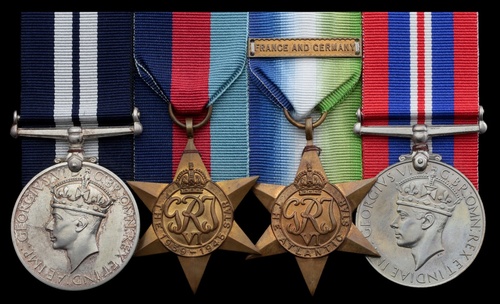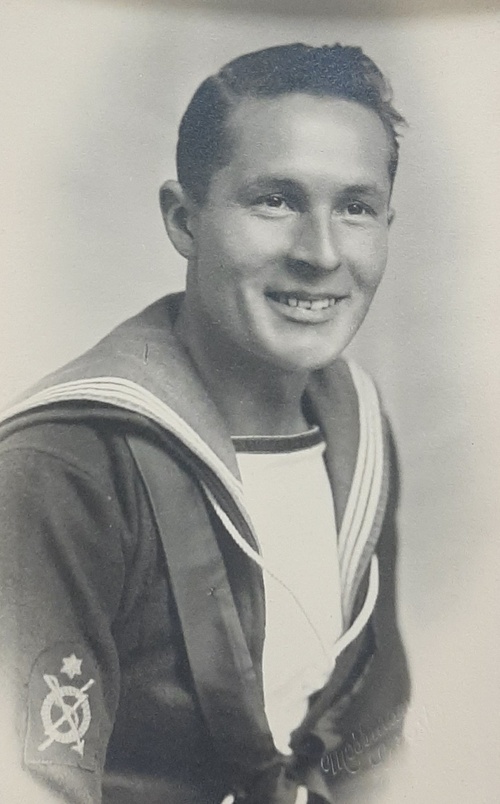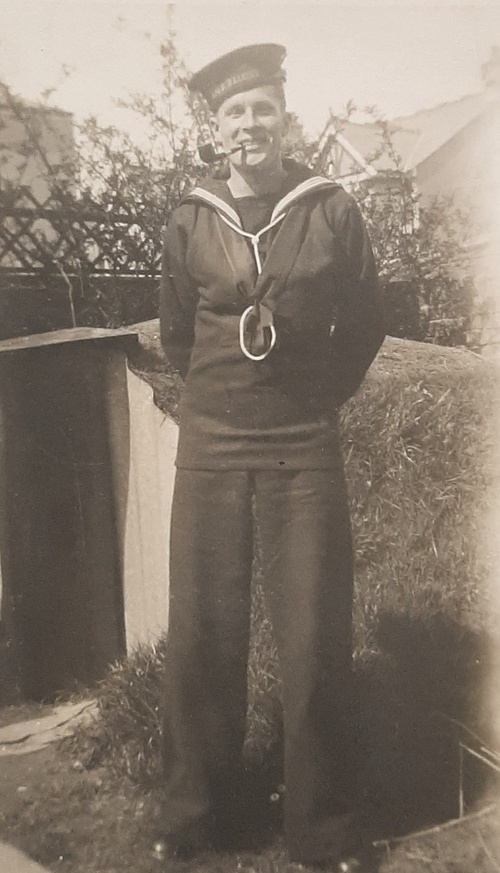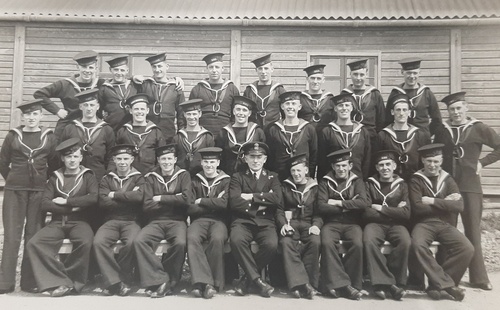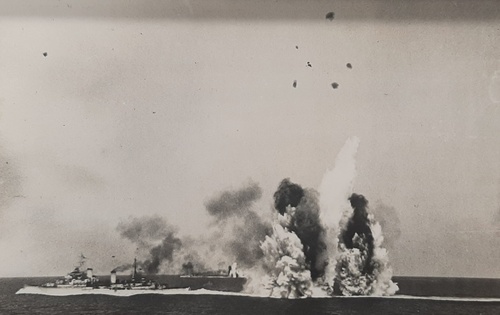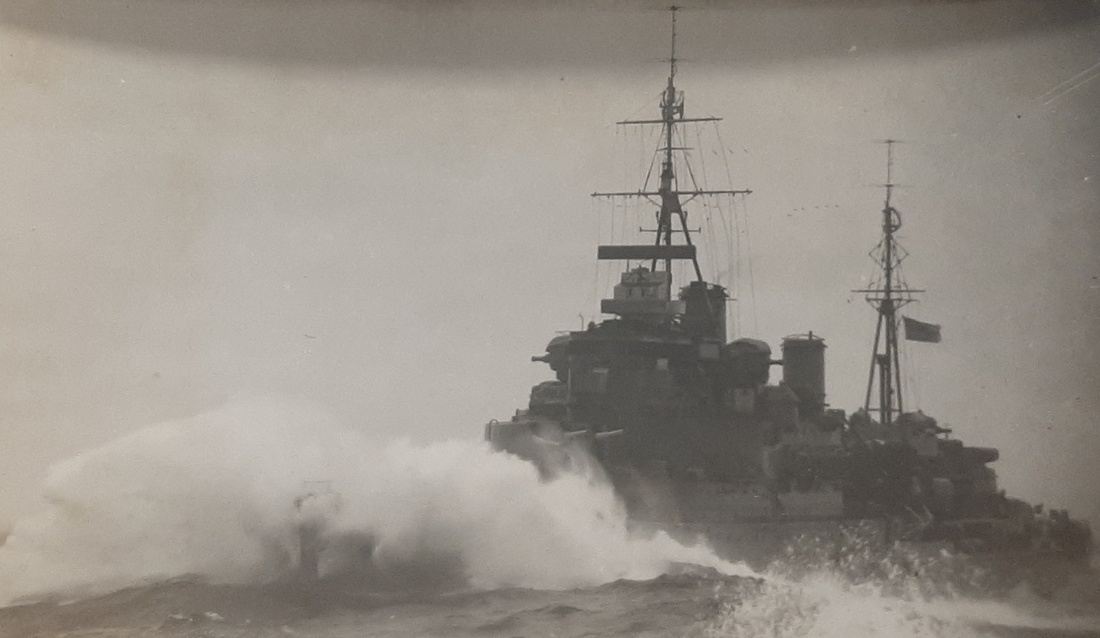Auction: 22103 - Orders, Decorations and Medals VII - e-Auction
Lot: 657
(x) A dramatic 'Battle of the Atlantic' D.S.M. group of four awarded to Leading Seaman J. S. Greenway, Royal Navy, a veteran of H.M.S. Kenya's engagements off Norway and Malta, later recognised aboard H.M.S. Redmill for his technical ability and devotion to duty which saw the destruction of U-722
Distinguished Service Medal, G.VI.R. (A/L. S. J. S. Greenway. D/JX254549); 1939-45 Star; Atlantic Star, clasp, France and Germany; War Medal 1939-45, good very fine (4)
D.S.M. London Gazette 14 August 1945, the original citation states:
'This rating's skill as A/S recorder operator he materially assisted in the destruction of a "U"-Boat. His devotion to duty and cheerfulness throughout out a long period of attacks, during which time he never left the A/S cabinet, are worthy of high praise. At all times he has maintained the A/S equipment at a very high standard'
Jim Stanley Greenway was born at Belgrave, Leicestershire on 4 March 1914. Training first at H.M.S. Raleigh from 5 March 1941 Greenway moved then onto Drake and finally the anti-submarine training establishment H.M.S. Osprey on 14 June 1941.
Kenya
Completing his training in August his first posting was H.M.S. Kenya on 15 August, which he served aboard as Ordinary Seaman. During this time Kenya was at the forefront of the British Campaign against the U-boat menace, being deployed on Operation Stonewall the month after Greenway's arrival. In the course of this operation he received his first taste of action when Kenya sank the blockade runner Kota Pinang on 3 October.
Later that same year Kenya was involved in Operation Archery, the Vågsøy Island raid. It was here she earned her nickname, 'the pink lady' due to her pink camouflage paint. The raid was a success, the first of its kind during the war and convinced Hitler to moved 30,000 men from the Eastern front to Norway. Kenya, and Greenway, made were not to remain part of these special operations for long however, they were destined for Russia.
With the entry of the Soviet Union into the war trade began to flow through the arctic and in early 1942 Kenya was sent there with a special mission. She was to transport 10 tons of gold to the United States from Russia as part of a deal to balance war loans and pay for a further supply of arms. Greenway was still with the ship at this time even being promoted Able Seaman on 5 March 1942. Aside from bullion shipments Kenya was also involved in the more mundane business of escorting vital convoys though the ice-choked arctic seas.
Kenya's next major deployment came during Operation Pedestal the attempt to resupply Malta. During this operation the convoy was harried by axis aircraft, light boats and submarines. Greenway's personal specialisation would have had him matching wits with the latter and towards the end of the Operation disaster struck when the Italian submarine Alagi managed to torpedo Kenya. With her bow torn away the stricken vessel managed to control the flooding and, with a much reduced top speed, continue to protect the convoy. In this manner she made it to Malta and even led the survivors back to Gibraltar.
Redmill
Leaving Kenya on 4 March 1942, Greenway served ashore for a long while before being posted to H.M.S. Redmill on 18 January 1944 where he was promoted Leading Seaman on 4 September 1944. Serving on patrol and escort duty Redmill was part of the 21st Escort Group during its long patrol from March-April 1945. This formation notably destroyed four U-boats during their sweep with Redmill accounting for U-722 on 27 March in the North Atlantic.
Towards the end of their patrol on 27 April off the coast of Ireland 21st Escort Group were spotted by U-1105. Getting in close she fired two torpedoes at the British ships, both of which struck Redmill, sheering off a chunk of her stern. H.M.S. Rupert swept the area with depth charges but, failing to score a hit, soon returned to Redmill to affect a rescue. Discovering that she was able to remain afloat she towed the stricken ship to Lisahally where she was found to be beyond repair.
Further Career
Remaining with Redmill only a short time Greenway left on 11 May 1945, returning to shore duties at Drake and later Cochraine. He was released to the Reserve on 10 January 1946 and received his D.S.M. in August 1946. Returning to civilian life Greenway lived at 37 acorn Street Leicester where he received a gratuity of £20 as a result of his award and died in 1977; sold together with copied research including service records, recommendation for award and an article on H.M.S. Redmill as well as an original archive comprising:
(i)
The recipient's original certificate of service in an unnamed original envelope.
(ii)
A submarine Detector History Sheet, named to the recipient.
(iii)
A national Registration Identity Card.
(iv)
A Post Office Savings Bank Book.
(v)
A Royal Navy Next of Kin Casualty Card.
(vi)
A poem written to H.M.S. Kenya stating the ships service.
(vii)
A statement of discharge and pension information sheet.
(viii)
A newspaper article on the Kenya in the Arctic.
(ix)
Letter from the King and the Admiralty relating to the award of the Distinguished Service Medal.
(x)
A collection of original photographs.
(xi)
A Watch named 'J. S. Greenway' to the reverse.
Subject to 5% tax on Hammer Price in addition to 20% VAT on Buyer’s Premium.
Sold for
£1,600
Starting price
£800

